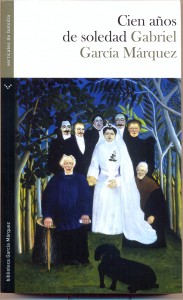Today, the U.S. Department of State unveiled a new 100,000 Strong in the Americas website available at www.100kstrongamericas.org. President Obama launched 100,000 Strong in the Americas to increase educational exchange opportunities in the Western Hemisphere. The initiative is implemented through partnerships between the U.S. government, including the White House and the Department of State; Partners of the Americas, NAFSA: Association of International Educators, foreign governments, universities and colleges, and the private sector.
Celebrate First Bilingual Literacy Month
Read Conmigo, the bilingual literacy campaign for children sponsored by Infinity Auto Insurance, has declared the first annual Bilingual Literacy Month this May. As the first celebration of its kind, Bilingual Literacy Month aims to raise awareness about the importance and benefits of raising bilingual kids.
Sacramento Rally Against Common Core
Protesters in Sacramento, CA held a rally yesterday against the introduction of Common Core standards.
Many California schools have already implemented changes and students are preparing to take tests based on the new curriculum, despite ongoing resistance across the United States.
Concerned citizens gathered for the event on the southeast side of the Captiol building yesterday, organized by groups: Democrats Against Common Core, Californians United Against Common Core and Eagle Forum of California.
Aboriginal Education Bill Faces Backlash
Shawn Atleo, the national chief of the Assembly of First Nations (AFN) faces criticism this week, after supporting a government bill described as a threat to Canada’s Aboriginal communities.
Publicly backing $1.9 billion Bill C-33, dubbed the ‘First Nations Control of First Nations Education Act’, Atleo has stated that the bill is out of respect for treaty rights, language and culture; and a solution in the long-standing demands for better control of Aboriginal schooling.
UN Language & Equality Symposium
Language Magazine editor Daniel Ward will be presenting a paper on Fostering Multilingualism in Anglophone Countries at a United Nations Symposium on Language and Equality on Tuesday, April 29.
Daniel welcomes the input of interested parties on the subject and on the following questions in particular: What role does technology have in creating access to world language education? How can promoting world languages in Anglophone countries curb English-language hegemony around the world? Please forward comments to [email protected].
The symposium is being organized and sponsored by the Study Group on Language and the United Nations in cooperation with The Centre for Research and Documentation on World Language Problems and will be held on Tuesday, April 29, 2014 at The Church Center, 777 United Nations Plaza, New York, NY 10017.
For further details, visit www.languageandtheun.org/
Songs Help Cubans Trace Roots to Sierra Leone
The Ganga-Longoba of Perico, Cuba, have sung the same chants for decades – passing the traditions on from generation to generation.
Until now, the singers had little knowledge of their ancestral roots – or how the songs arrived in their community.
Yet thanks to the work of University of Sydney historian Dr Emma Christopher, Cuba’s Ganga have been able to trace their origins back to a single remote village in Sierra Leone, through the careful examination of their songs.
It is believed that ancestors of the Afro-Cuban community were sold into slavery approximately 170-years ago, bringing their chants – thought to be songs of healing, with them to Cuba.
Dr Christopher’s first breakthrough came after a group in Liberia saw her footage of a Ganga ceremony and recognized elements of their own local ritual, inspiring her two-year search into the songs’ origins.
Her findings eventually led her to the village of Mokpangumba, where locals rapidly identified the near-extinct Banta language; once belonging to an indigenous group torn apart by the slave trade.
“When I first filmed the Ganga-Longoba, I believed their ceremonies were a mixture of many different ethnic groups,” explains Christopher “I had no idea that a large number of Ganga songs would come from just one village. I think that’s extremely unusual”.
Villagers identified nine songs in total after watching footage from the Perico community, despite changes to lyrics from time and distance, claiming “They are we” in acceptance of the Cubans as family.
For the Ganga themselves, the findings have erased many doubts ; proving that their heritage lies not in Congo as previously thought, but in Southern Sierra Leone.
Since the discovery, members of the Ganga-Longoba have visited Mokpangumba in further attempts to uncover their roots. Their journey has been captured in a documentary by the Australian researcher entitled They Are We; featuring emotional scenes of the two groups sharing ancient musical traditions and welcoming their new family ties.
Spanning more than three centuries, approximately one million slaves were shipped to Cuba for transatlantic trade purposes. The majority were trafficked against their will in the early 19th Century, becoming laborers on the Island’s sugar plantations.
Alaska Senate Passes Native Language Bill
The Alaska Senate voted this morning to make each of Alaska’s native languages, official languages of the state.
Twenty-one indigenous languages, including :Iñupiaq, Siberian Yupik, Central Alaskan Yup’ik, Alutiiq, Unangax?, Dena’ina, Deg Xinag, Holikachuk, Koyukon, Upper Kuskokwim, Gwich’in, Tanana, Upper Tanana, Tanacross, Hän, Ahtna, Eyak, Tlingit, Haida, and Tsimshian have been granted official status, according to the bill.
However according to senate representatives, passage of the bill will not require public translations of signs and formal documents, and will create no further costs for the state. For the people of Alaska the bill is largely symbolic, in a bid to acknowledge all languages as equal.
The bill passed unanimously, but was not scheduled for a vote during the final day of legislative assessments, despite its introduction by Rep. Jonathan Kreiss-Tomkins last Wednesday. Anxious supporters of the bill gathered outside the office of Sen. Lesil McGuire for up to fifteen hours, holding a vigil to emphasize the importance of indigenous languages until the session concluded.
Officially titled ‘House Bill 216’, the bill will see all native languages of Alaska added to a 1998 statue that made English the official language of Alaska.
Lance Twitchell, Professor of Native Languages at the University of Alaska Southeast expressed: “Our language is everything. It’s the air we breathe. It’s the blood that flows through our veins” – he added “It [the bill] marks the end of an era, when native languages were suppressed or ignored, and now these become an equal or vital part of Alaska”.
The bill is currently awaiting the signature of Gov. Sean Parnell and will make Alaska the second state after Hawaii to officially recognize indigenous languages.
Latin America’s Literary Pioneer Dies
 Gabriel Garcia Marquez, the Colombian author whose enchanting stories of love and mystery seduced millions of readers and put magical realism on the literary map, died on Thursday. Garcia Marquez died at his home in Mexico City, after a bout of pneumonia. He was 87.
Gabriel Garcia Marquez, the Colombian author whose enchanting stories of love and mystery seduced millions of readers and put magical realism on the literary map, died on Thursday. Garcia Marquez died at his home in Mexico City, after a bout of pneumonia. He was 87.
A prolific writer and an ardent socialist, Garcia Marquez’s international fame was won through “One Hundred Years of Solitude,” a dream-like, dynastic epic that helped him win the Nobel Prize for Literature in 1982.
For more on this literary genius, click here



